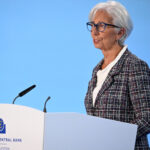This is an edition of our climate change and education newsletter. Sign up here.
109 on the first day of school?
That was the case this year in Palm Springs, California, where parent Cyd Detiege has been campaigning to delay the start of the school year because of extreme heat.
Palm Springs Unified District officials haven’t budged, but administrators elsewhere in the country are shifting school calendars to keep kids from commuting to school in high heat and learning in sweltering classrooms, according to a new Hechinger story from writer Erin Rode.
The neighboring Desert Sands Unified School District, after studying which weeks are typically hottest, decided to postpone its first day from the third to fourth week of August and push the last day of school further into June.
Other districts that have delayed the start of school because of heat are Denver, Milwaukee and Philadelphia. At best, though, the schedule shakeups are a stopgap. “Just thinking about the shift in our climate across our planet, shifting the calendar isn’t going to be as helpful as it was three years ago,” said Carrie A. Olson, Denver school board president. The solution for her district, she said, is going to be more air conditioning and heat mitigation strategies in schools.
Climate change has certainly scrambled how I think about seasons. Growing up in Washington, D.C., I used to love July and August. Now it feels like fall is the new summer, the time to finally escape outdoors and enjoy being outside.
Related reads
How extreme heat is threatening education progress worldwide. New UNICEF data demonstrates how hot temperatures are unraveling education gains globally, writes The New York Times’s Somini Sengupta. One in five kids today experiences twice as many extremely hot days as their grandparents did.
Canceled classes, sweltering classrooms: How extreme heat impairs learning. I wrote about kids suffering in school buildings without air conditioning or being sent home early for “heat days,” and how high temperatures deepen racial divides in education.
As climate change fuels hotter temperatures, kids are learning less. The 19th’s Jessica Kutz covered how policymakers are taking notice of how higher temperatures mean dehydrated, exhausted students.
The interview
I spoke with Shiva Rajbhandari, 20, who just stepped down at the end of a two-year term this month on the Boise School Board, in Idaho. Rajbhandari ran and won at age 17 on a climate change platform. He’s now a sophomore at the University of North Carolina at Chapel Hill and an organizer for the Sunrise Movement, helping to lead its push for a Green New Deal for Schools. The interview has been edited for clarity and length.
You ran for school board on comprehensive climate education and energy efficient schools. How much progress were you able to make on those issues?
I’ve been really impressed with the progress in the Boise school district. We have conducted a districtwide, scope one through three carbon audit, using a private contractor, and have identified easy ways to reduce greenhouse gas emissions and save money in the process. Now we are putting together a long-term plan on greenhouse gas emissions mitigation and also on water conservation, waste reduction and climate education.
What do you want to see happen in the next two years?
I hope that we can pass a comprehensive climate action plan this school year. A lot of these changes, especially with money coming from the EPA and Inflation Reduction Act, are changes that we can begin implementing immediately. We now have a grant to purchase electric buses. There’s a lot of stuff around energy efficiency and the way we build our new buildings especially, where it’s really easy to, say, install an electric heater instead of a natural gas heater. I’m also looking forward to an upcoming bond in 2028 when I think we’ll put a lot of these climate infrastructure projects on the ballot.
Do you feel like your other school board members took you seriously?
Not at first. I think there was an attitude of, I’m here and I don’t really know what I’m doing. But I think I changed that over the course of my term. And I do think that I’ve expanded student voice. My fellow trustees, many of them didn’t have kids, they are not interacting with kids on a day-to-day basis who are in our school district. I do think people begin to underestimate young people and the students in our schools. And I think I helped to change that.
You had pushed for a permanent student non-voting position on the board but that didn’t happen. Is that something you’ll keep pushing for?
Yes, absolutely. We just saw last week in New York the signing of legislation requiring all school districts to have at least one non-voting student member on their school board. We have other states and districts where that is the case. I think that, fundamentally, students bring a perspective that is needed in the boardroom. They’re on the ground in the classroom every day and they are the ones seeing the implementation of the policies and the budgets that school boards are voting on.
What are the biggest barriers to progress on these climate and education issues?
I think it’s a belief gap. There is kind of this old guard that thinks schools are the place to teach reading, writing and math. And that’s absolutely true. But there’s so much more of a role that schools have to play in modern society. We have schools that are feeding America’s kids, schools are providing child care, they are agents of socialization. It’s really the place where most people in this country interact with government on a day-to-day basis. Schools are keystone entities in our community and they have a lot of power to shape what our communities look like. And I think when it comes to stopping the climate crisis, that’s the ultimate superpower of our schools. When a school has installed solar panels, it shows everyone else in that neighborhood that solar panels work and are saving our district money. When a school in Phoenix, Arizona, can provide heat relief when it is 110 degrees, it shows our communities what climate resilience looks like. But the belief gap exists out there that we don’t have the technology to solve climate change, that it’s really expensive, and it’s not schools’ place.
Help a reporter
My colleagues and I were struck by a recent Guardian story on four high school football players who died in August for what appears to be heat-related causes. The news outlet notes that 77 heat-related athlete deaths have been recorded since 2000, of which 65 percent were teens. At Hechinger, we want to learn what training coaches and teachers need to keep kids safe in a hotter world. What do you think about kids playing sports in extreme heat? Do we need new rules and regulations on outdoor sports? Let us know your thoughts at newsletter@hechingerreport.org
Resources and events
How districts are spending Inflation Reduction Act dollars to green their schools: Undaunted K12, a nonprofit group that advocates for schools to reduce their climate toll, recently shared an interactive map that shows which school districts use federal tax credits to defray the costs of clean energy projects. Some examples: The Menasha Joint School District in Wisconsin expects to receive $3.8 million in tax credits to help build a new carbon neutral middle school that includes solar panels and energy storage. Hasting Public Schools in Nebraska is using the federal dollars for ground-source heat pumps, while North Carolina’s Clinton City Schools are investing in solar. How to protect vulnerable Americans — including children — from extreme heat: That’s the topic of an event on Sept. 18 hosted by the Center for American Progress, a left-leaning think tank. Speakers include Levar M. Stoney, the mayor of Richmond, Virginia; Rev. Terrance McKinley, a vice president with the National Black Child Development Institute; John M. Balbus, director of the Office of Climate Change and Health Equity for the Department of Health and Human Services; and David Michaels, an epidemiologist and professor at George Washington University.
This story about schools and heat was produced by The Hechinger Report, a nonprofit, independent news organization focused on inequality and innovation in education. Sign up for the climate and education newsletter.
The post Too hot for school appeared first on The Hechinger Report.
This is an edition of our climate change and education newsletter. Sign up here. 109 on the first day of school? That was the case this year in Palm Springs, California, where parent Cyd Detiege has been campaigning to delay the start of the school year because of extreme heat. Palm Springs Unified District officials
The post Too hot for school appeared first on The Hechinger Report. Elementary to High School, Solutions, The South, The West, climate change, Newsletter The Hechinger Report





